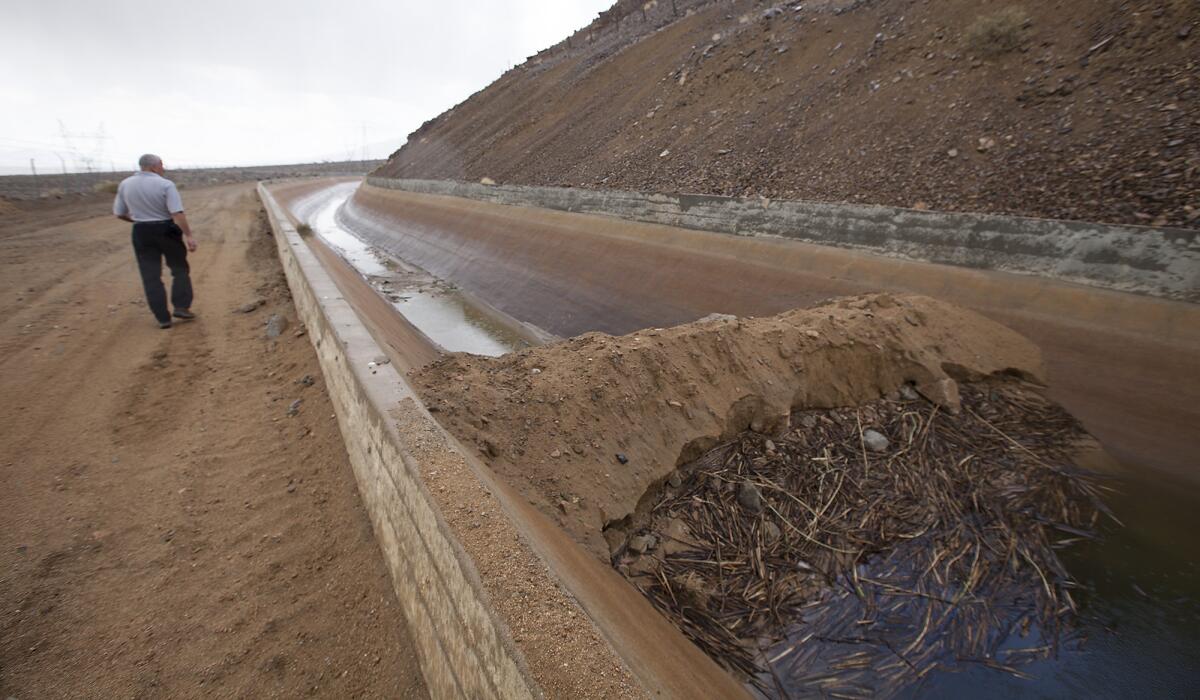L.A. getting no Owens Valley runoff for first time since 1913

DWP manager Jim Yannotta walks by a dam constructed of concrete blocks, reeds and mud in the Los Angeles Aqueduct at Owens Lake built to conserve meager Eastern Sierra snow runoff.
- Share via
For the first time since 1913 -- when Department of Water and Power chief architect William Mulholland opened the waterway with the words, “There it is. Take it!” -- the 233-mile Los Angeles Aqueduct has stopped carrying Owens Valley runoff to Los Angeles.
As severe drought continues to grip California, the DWP confirmed Thursday that it had dammed the aqueduct at Owens Lake in order to conserve meager Eastern Sierra snow runoff.
“That’s how bad this drought is,” said LADWP Spokeswoman Amanda Parsons. “We’ve never kept the water in the valley before. This is unprecedented.”
The eight-foot-tall dam, which is constructed of concrete blocks, reeds and mud, will remain in place at least until November, so that the LADWP can fulfil a variety of mandated obligations, including dust mitigation, tribal land requirements and assisting the Lower Owens River Project -- the nation’s largest river restoration effort.
Roughly 10,000 acre-feet of water saved from last year’s runoff will be exported to Los Angeles from a storage area south of the dam between now and sometime after November, Parsons said.
“Basically, we will not be exporting any water from the Eastern Sierra runoff to Los Angeles this year until November, and when we do it will be only 15% of what Los Angeles would typically receive during an average year,” Parsons said.
Usually, the aqueduct supplies Los Angeles with a third of its water.
The dam, which Parsons described as looking “half human and half beaver” is located at the southern end of Owens Lake.
“On one side there’s heightened water, but on the other there’s nothing but a trickle,” Parsons said. “That’s because no dam is perfect, and a little bit of water seeps out, but there’s not enough to actually make its way down the aqueduct.”
Follow @montemorin for drought and science news
More to Read
Sign up for Essential California
The most important California stories and recommendations in your inbox every morning.
You may occasionally receive promotional content from the Los Angeles Times.











